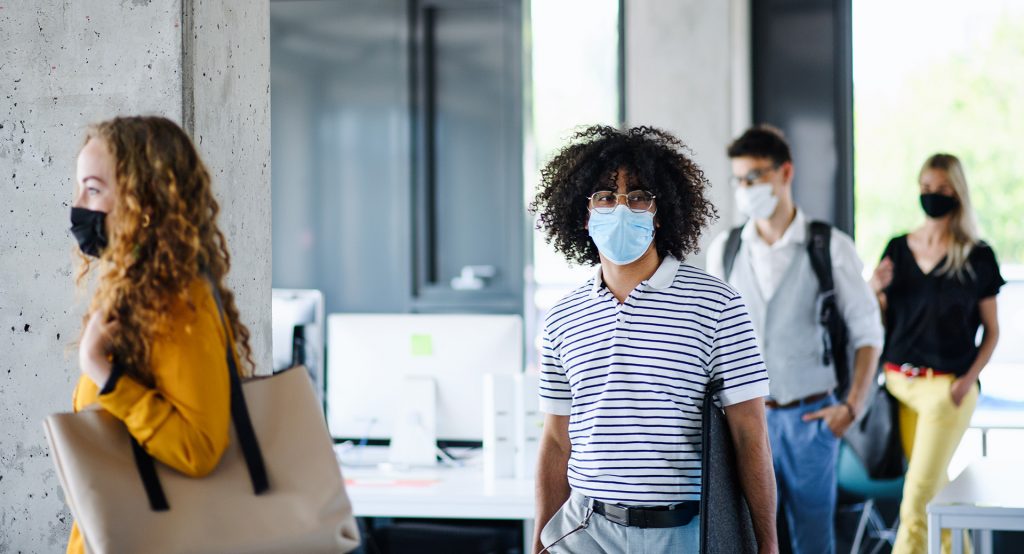
Most colleges and universities have considerable experience in addressing outbreaks of highly contagious serious diseases among their students, such as meningitis or measles, through mandatory quarantine or isolation. But COVID-19 presents a public health challenge not seen in the United States in decades, and institutions of higher education (IHEs) planning to reopen their campuses during the fall 2020 semester will need to manage quarantine or isolation protocols involving scores of students at a time. Given the scope of the task, some administrators may question whether IHEs should involve themselves in quarantining and isolation at all — and on what legal basis they may do so. IHEs, always operating under the scrutiny of students, faculty, staff, alumni, parents, local communities and the media, should be prepared to handle resistance to protocols that limit autonomy and freedom of movement. In this fraught environment, IHEs need to know what quarantine and isolation steps they may legally take, and they must take care to enact such measures in appropriate and defensible ways.
Authority to Require Quarantine
At the outset, it is worth noting that IHEs have no independent legal authority to require an individual either to quarantine or to isolate. That power is vested in the federal and state governments. The federal government, through the CDC, has statutory authority under the Public Health Act to impose quarantine or isolation to prevent persons with certain communicable diseases, including COVID-19, from entering the country or from transmitting the disease between the states. However, the principal regulatory authority in this arena rests with the states, which are authorized under the police powers vested in them through the 10th Amendment to the U.S. Constitution to take measures to protect the public health, including quarantine and isolation.
Given that government holds the basic authority to require isolation or quarantine, on what basis may IHEs legally require their students to isolate or quarantine? Moreover, from a legal standpoint, why should they?
The answer to the first question is rooted principally in contracts law. When an IHE admits a student and accepts the student’s tuition, the IHE and student enter into a contract. That contract is defined by various documents, such as the application for admission, admission policies, student handbook, housing agreement (if the student resides in a dormitory) and a wide range of other IHE policies and procedures through which the IHE and student define their respective rights and responsibilities. Thus, IHE administrators concerned about their authority to impose quarantine or isolation should, in the first instance, consult their applicable policies to ensure that they provide grounds for the IHE to take measures such as quarantine or isolation to protect the health, wellbeing and security of the campus community.
Complying with Federal, State and Local Laws
Superimposed over the contract between the IHE and student are a welter of federal constitutional and statutory rights that may be triggered either because the IHE is a state institution or because the IHE, as a recipient of federal funding, has agreed to operate in conformance to prescribed federal laws. Though a thorough discussion of these federal rights is beyond the scope of this article, the essential principle for IHEs is that isolation and quarantine must be handled in a nondiscriminatory, non-retaliatory way, in conformance with applicable confidentiality constraints, and with provision for students to receive notice and explanation of the measures to be taken and an opportunity to be heard if the student believes the measures are unwarranted. These federal rights reinforce the need for IHEs to construct quarantine and isolation protocols that hew to guidance from the CDC as well as state and local public health authorities. And, understanding that if it isn’t documented, it didn’t happen, IHEs should assure that their systems adequately track both the data that implicate the need for quarantine or isolation for a given student as well as the data generated through that student’s experience.
As to the second question — why, given that quarantine and isolation are in the first instance the province of public health authorities and will no doubt be controversial and difficult to manage, IHEs should get involved at all — the legal landscape includes landmines that make it impossible for IHEs simply to sit back and wait for local governments to handle quarantine and isolation. First, as employers, IHEs have a duty to provide a safe working place. The federal Occupational Safety and Health Act’s General Duty Clause requires employers to provide their employees with a workplace free from recognized hazards likely to cause death or serious harm. Second, under general personal injury legal principles, IHEs should assume that they have the duty to protect students from foreseeable risks that may arise through attending classes and living in dorms.
COVID-19 is clearly a known and foreseeable risk. Though IHE administrators must work closely with local public health authorities and assure that IHE quarantine and isolation protocols are consistent with state and local law, as a practical matter, they cannot assume that local authorities will have the resources to manage wide-scale quarantine or isolation measures. Doing so only increases the IHE’s potential liability to students, faculty and staff who contract COVID-19 in the absence of rigorous, science-based and data-driven quarantine and isolation measures.
1 For guidance from the Occupational Health and Safety Administration on how employers may prepare their workplaces for reopening, see https://www.osha.gov/Publications/OSHA3990.pdf .
2 For a summary of each state’s quarantine and isolation laws, see this compendium maintained by the National Conference of State Legislatures: https://www.ncsl.org/research/health/state-quarantine-and-isolation-statutes.aspx .